By Amit Kumar, TwoCircles.net
Churachandpur, Manipur: September 1 started like every other day at work for Chingneihoih, 22, from Churachandpur. For the past four years, she had been working in a restaurant in Nungambakkam, Chennai. A day before, she had spoken to her family and discussed the simmering situation back home, where violence had erupted after three controversial bills considered anti-tribal had been passed by the Manipur state government. She had been told that the homes of the MLAs had been attacked.
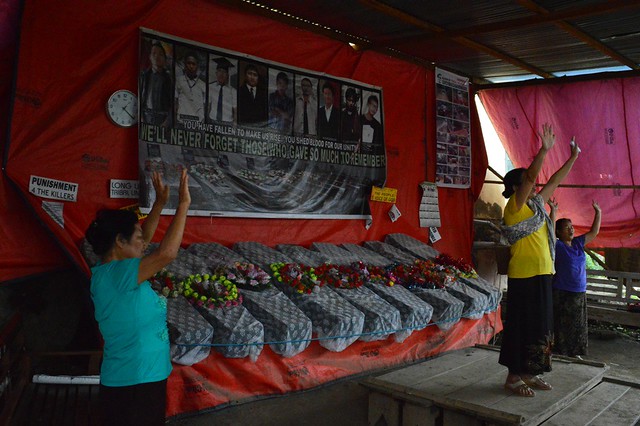
Women pray at the makeshift shrine outside the morgue in District Hospital, Churachandpur.
However, given that she was nearly 2,000 miles away from home, she could do little. Around 2 pm, as she was busy handling customer orders, she received a phone call; a call that was to change her and her parents’ life forever. Her younger brother, Khamthianmuan, 22, had been shot during the protests against the Bills and had died on the spot. It took Chingneihoih nearly four days to reach home and never returned to her job. “With my brother gone, there is no one to take care of my parents and I am the only child they have. Going back is no longer an option,” she says.
Lun Valte is a 33-year-old resident of Churachandpur. On September 1, she along with her seven siblings and her parents had been home, even as the town erupted in protests. Around afternoon, the second-youngest, Robert Jamminthang, decided to visit a relative nearby. Since this was slightly away from the scene of protests which was mainly near the Police Station, Valte was not very worried. On his way, however, Robert heard the sound of bullets and decided to check what was happening. It proved to be a fatal mistake; a bullet caught him in his head, and Robert, a student at a local Church college, was dead. “Most of the people who got killed or injured were near the Police station, but Robert’s body was found in a different corner. We were told around 3 pm that he had been injured, but when we went out to find him, he was lying in a street in a pool of his own blood, dead,” says Valte, barely able to hold her tears.
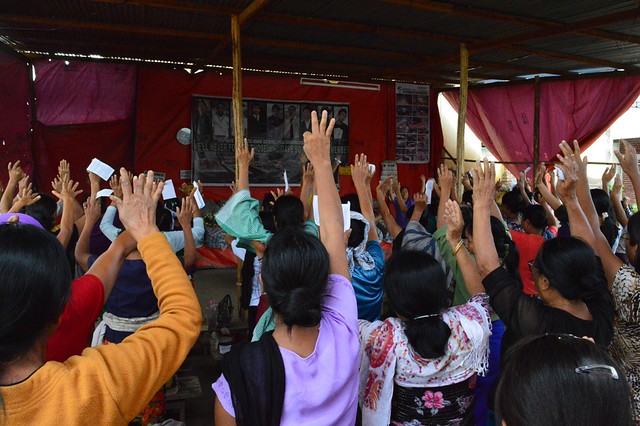
Women raise their hands in prayer to mourn for the nine killed in September 2015 police firing.
These may be personal stories, but it would not be wrong to say that every family that suffered on the first two days of September have similar, spine-chilling stories to narrate. The death of nine people over two days, including that of a 10-year-old child, has scarred the town forever, and shown them the effects of standing against the state government. And Churachandpur is taking the fight head on, with the victims’ families and friends of right at the heart of the protests.
The dead will not be buried until justice is done
The district hospital of Churachandpur is an important landmark in the city. First, apart from the police station, it is the only other visible government institution in an area where almost all markets of ‘development’ (schools, colleges, hospitals) are funded either by private individuals or Church associations. Two, the daily crowd visiting the hospitals can be divided into two categories: the first are the people who visit the hospital for personal reasons; second, are people who head straight to a corner in the hospital. Located at the backend of the hospital, is the morgue. But this morgue is unlike any other that you might have encountered in your life. Every day, for the past 290 days, friends and families of the victims come together at a makeshift shrine dedicated to the martyrs, with nine coffins marking the nine dead people. Every day, they pray, weep and share their pain of having lost their loved ones.
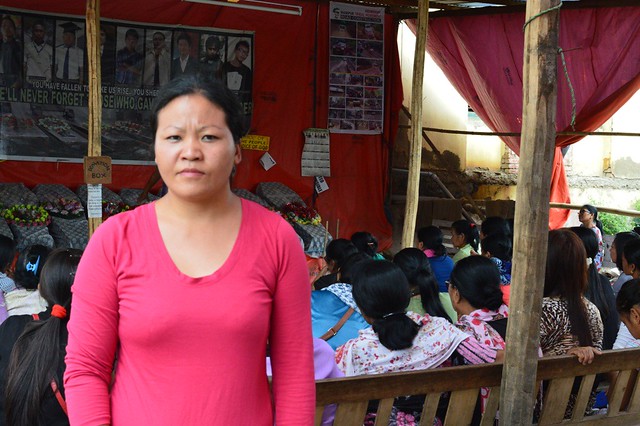
Lun Valte, whose brother Robert was killed in police firing.
Every day, the families ask the same questions: why did this happen? Why did the police shoot the protesters? Why has the state government never paid attention to their sorrows? Why have the police not even registered an FIR against the shooting? They chant in loud voices, asking God for answers. They chant, and pray, for the Sixth Schedule to be implemented in their region. They chant, because that is the only option they have left now.
The police officials are also aware that the public has turned against them. Two officers refused to speak on the matter with Twocircles.net saying that the matter was political. One Police officer at the Churachandpur Police Station agreed to speak on the matter, but only on the condition of anonymity, saying that he did not wish to further anger the locals. “It is wrong go say that no FIR has been registered. We filed a Suo Motu FIR against the killings soon after the incident an incorporated the families’ complains in the FIR after four months,” he said. However, he refused to share the progress on the investigation and refused a definitive answer regarding when the investigation will be completed. “This matter is no longer in the hands of the Police,” he said without divulging any details.
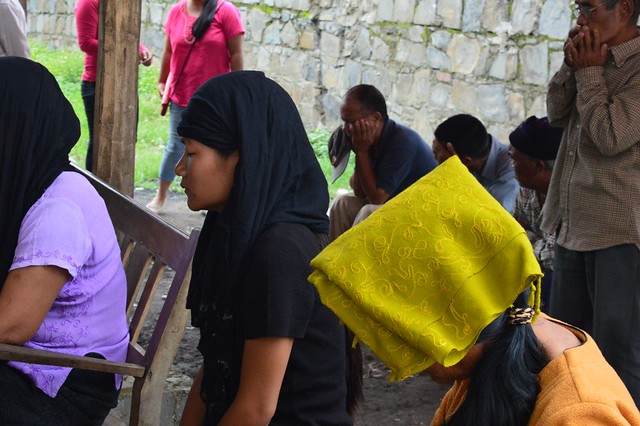
Chingneihoih (in black) whose brother was killed in police firing, prays at the makeshift shrine.
Valte comes here daily, and believes that this is the only way for the families to overcome the pain of losing their loved ones. “This is as much a form of protest and it is a feeling of brotherhood among us. This city will never be the same again. The killings have galvanised the entire town into understanding the repercussions of what lies ahead for them if the bills are passed,” she adds. According to Chingneihoih, the town has come together like never before to protest. “My brother was a Church student and his interest in Gospel was much more than his interest in politics. But he was still killed…the police treated their bodies like animals, kicking them after they were dead and laughing at them,” she says, teary-eyed. “But these sacrifices have brought us together,” she says. “People who earlier did not care about these Bills are also a part of the protests now,” she adds.
The refusal to bury their dead is the most important sign that the families will not rest until justice is provided to them. According to Benjamin Vualnam, a member of the Joint Action Committee against Anti-Tribal Bills, the state government initially tried to convince the families to bury their dead. “We had to arrange for ice on a daily basis to prevent the bodies from decaying; as the morgue did not even have a cold storage,” he says. It was until 100 days later that the morgue was provided with adequate cooling to store the dead bodies. The bodies remain in individual cases, each bearing the name of the dead person. Once in a while, the morgue is opened for families to see their loved ones lying inside. “It breaks our heart to see this, but it also strengthens our resolve,” adds Vualnam.
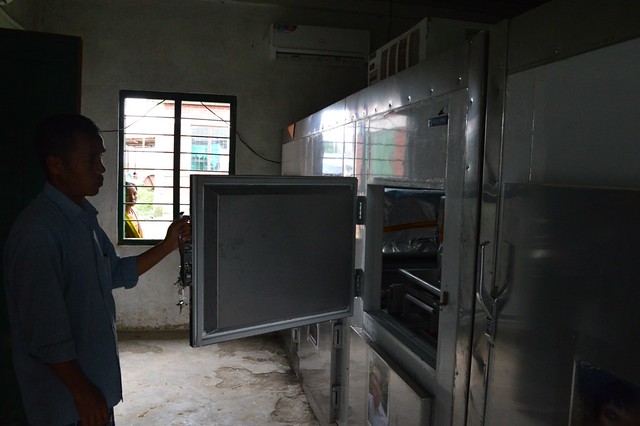
An employee of the District Hospital opens the cold storage of the morgue, where the bodies have been kept.
The nine martyrs have become the biggest symbol of resistance in the town against the fight to protect their lands. To mark 200 days of their death, the town released 200 air lanterns to commemorate their sacrifice and pray for the peace of departed souls. On 26 June, to mark 300 days of their death, the JAC will be distributing flags with the slogan “Tribute to the nine tribal martyrs” and every household will be requested to hoist them on their roof to show solidarity with the protests. For Churachandpur, protesting is no longer an option; it is the only way to pay respect to the memory of the nine people who were killed for speaking against the state government.
